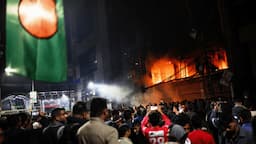Seven years before a catastrophic Air India crash claimed 260 lives, the United States aviation watchdog had flagged a potential hazard with the aircraft's fuel control switches — the very mechanism now under scrutiny in the fatal AI 171 tragedy.
In December 2018, the Federal Aviation Administration (FAA) issued a Special Airworthiness Information Bulletin (SAIB) highlighting that some Boeing 737 aircraft had fuel control switches installed without the locking feature engaged. These switches are critical to regulating engine fuel flow and can be used mid-flight to shut down or restart an engine during emergencies.

But because the bulletin was advisory and not legally binding, it was not followed up with an Airworthiness Directive — the FAA’s enforceable tool to fix unsafe conditions. As a result, Air India did not perform the recommended inspections, including on its Boeing 787-8 aircraft, which shares the same switch design.
On June 12, just three seconds after lifting off from Ahmedabad, the fuel control switches of flight AI 171 transitioned from "RUN" to "CUTOFF" within a second of each other, according to the preliminary report by India’s Aircraft Accident Investigation Bureau (AAIB). The aircraft plunged into a medical college hostel, killing 241 on board and 19 on the ground. Only one passenger survived.
The report does not confirm whether the switches were moved inadvertently or if it was a technical malfunction. But chilling cockpit audio captured one pilot asking the other, “Why did you cut off the fuel?” The second pilot replied, “I did not.”
Experts are now raising serious concerns about the reliability of the switch mechanism and Boeing’s role in ensuring fail-safe systems.
“We can’t fault the pilots, who were very seasoned. So, something was seriously wrong with the system provided by Boeing,” said Sanat Kaul, former joint secretary of the Civil Aviation Ministry.

The commanding pilot, Captain Sumeet Sabharwal, had logged over 15,000 flight hours, while co-pilot Clive Kunder had more than 3,400 hours of flying experience.
Captain Kishore Chinta, a former AAIB official, said investigators must explore whether the switches could have been electronically triggered without physical pilot input — a possibility that could point to deep flaws in the aircraft’s electronic control system.
The incident is the worst aviation disaster involving an Indian airline in four decades. As the full investigation unfolds, questions remain over whether a non-mandatory advisory from 2018 was a missed red flag — and if lives could have been saved had the warning been heeded.







.jpg&w=256&q=75)









